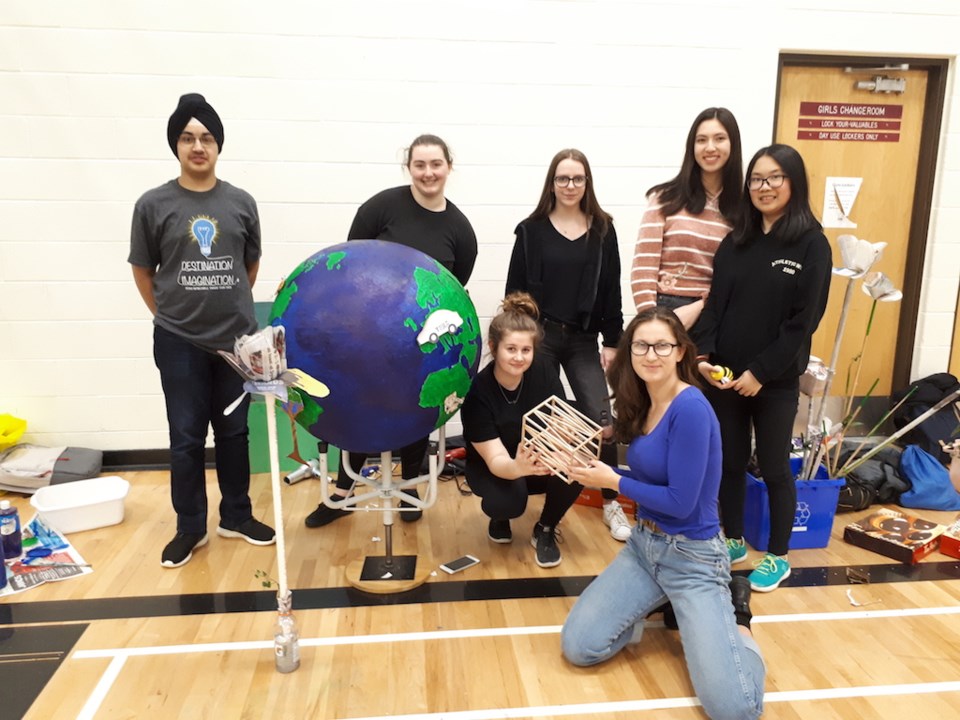A group of high school students from Squamish has won a spot to test their engineering project against international teams at a science competition in May.
The seven students, all in Grade 10 at Howe Sound Secondary, will attend the global finals of Destination Imagination's engineering competition being held in Knoxville, Tenn. May 23 to 25.
"Entering this competition, we never thought we'd make it this far," said student Trinity Fearon. "To go and compete alongside countries from the other side of the globe, it's really exciting."
Destination Imagination bills itself as the world's largest celebration of student creativity. According to the event's website, 8,000 students from over 15 countries attend the final round of the annual competition.
The Howe Sound team calls itself the Moli-cools, a play on molecules, and six of the seven members are young women.
Christina Smyth, a science teacher at Howe Sound, suggested the idea to students after doing the competition when she was a teen.
"It's great because you get to meet kids from lots of different schools, interact with a lot of different people and also problem solve," she said. "It's very creative and challenges them quite a bit."
This year's engineering challenge is called Drop Zone, and students are tasked with building a structure to withstand impact. They work within a limited budget and create the lightest possible structure that can withstand heavy weightlifting-style plates being dropped on it.
The Howe Sound team has designed a 98-gram structure that can withstand nearly 320 kilograms of force.
"They recognized triangles are a very strong shape and rolled with that," Smyth said.
She likes the competition because it combines STEM fields (science, technology, engineering, and math) with the arts by challenging students to present their project using it to tell a story.
The Moli-cools have painted their structure like a globe, and say it represents human-caused environmental issues like pollution and global warming. But each weight that's dropped represents a positive change that people can choose to make like not driving or replenishing the bee population.
Eventually, the structure breaks, showing there's hope in the fight against climate change.
"A lot of the stories are generally that the weights are negativity being dropped," said Fearon. "We changed that so the weights are the positive."
Smyth loves that her students turned the typical competition narrative on its head to tell an optimistic story.
But before they can go to Tennessee, the team needs to fundraise to cover travel costs. Smyth estimates they need to raise between $15,000 and $20,000.
They've started a GoFundMe campaign, "Send the Moli-cools to Globals" that had already raised $4,700 by April 15. The students are also planning fundraisers at their school.
The team has been working together since November, and Smyth says the teens have been incredibly committed to the engineering challenge. They meet in her classroom most days after school and sometimes stay until 10 p.m. perfecting their apparatus.
Although the students were drawn to the competition because of their affinity for science, many say the most valuable lesson they've learned is how to work well together under pressure.
"We're all very different and we all kind of fit together like a puzzle piece," said student Caelin Nash. "Because we all have different aspects that contribute to the team."



